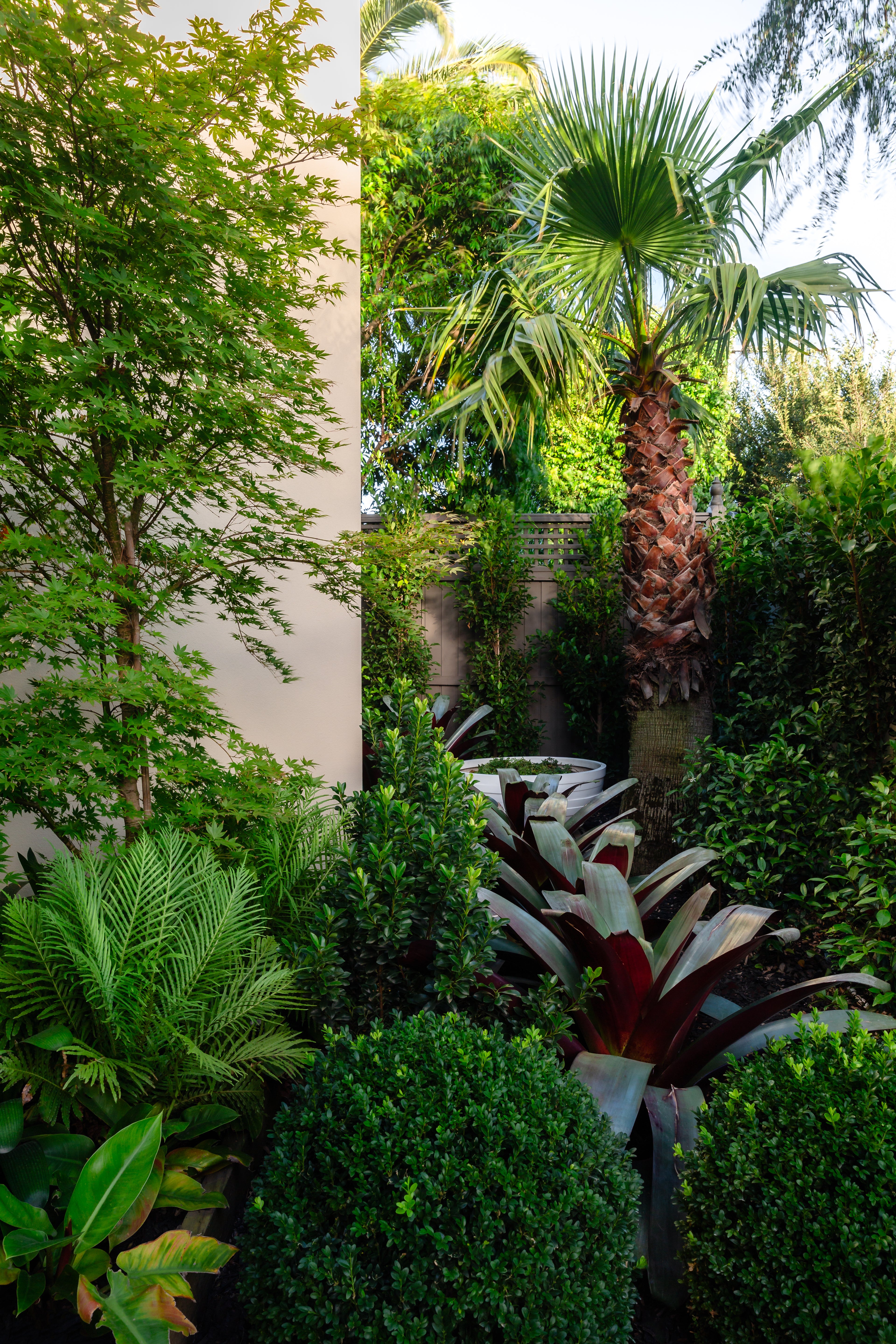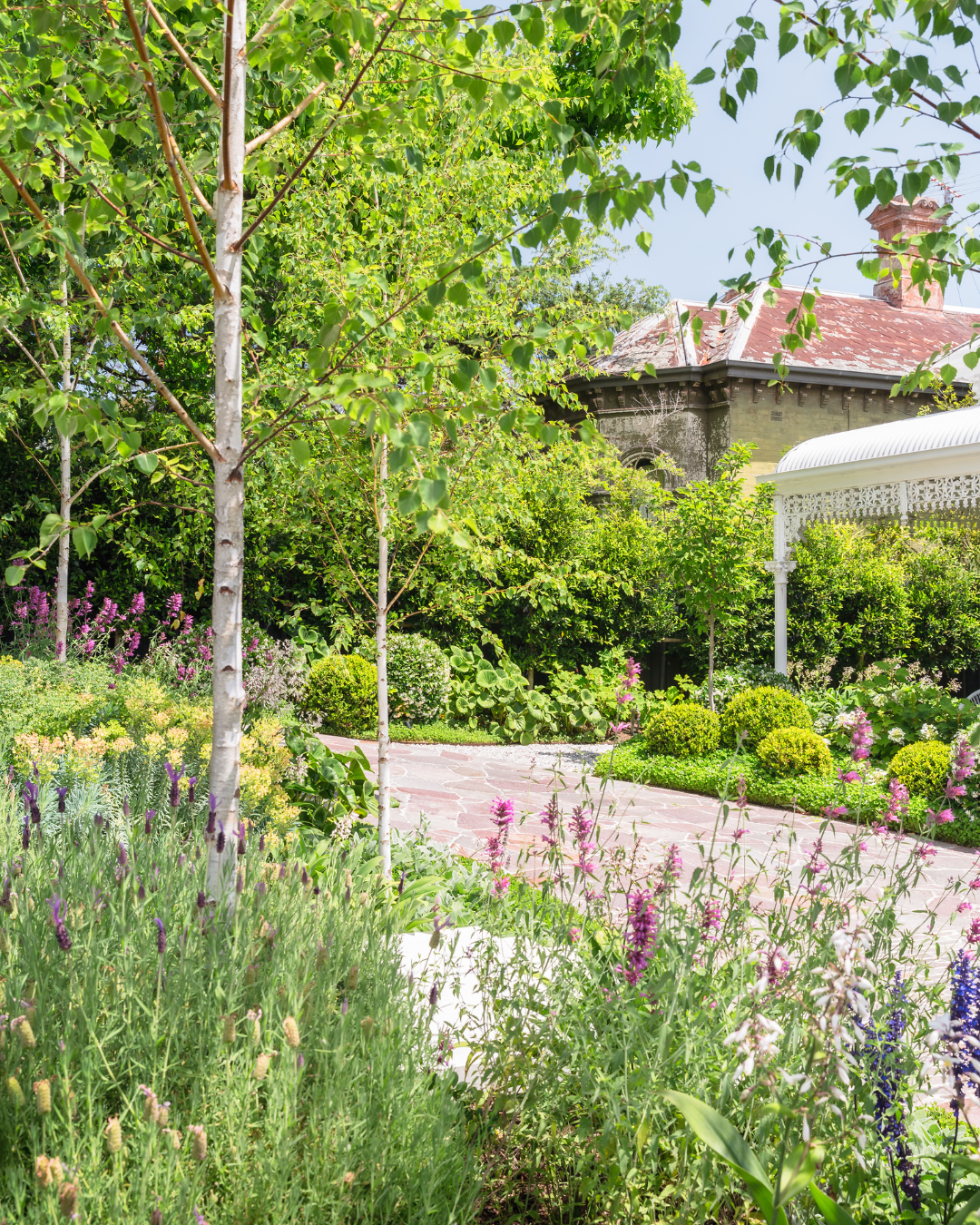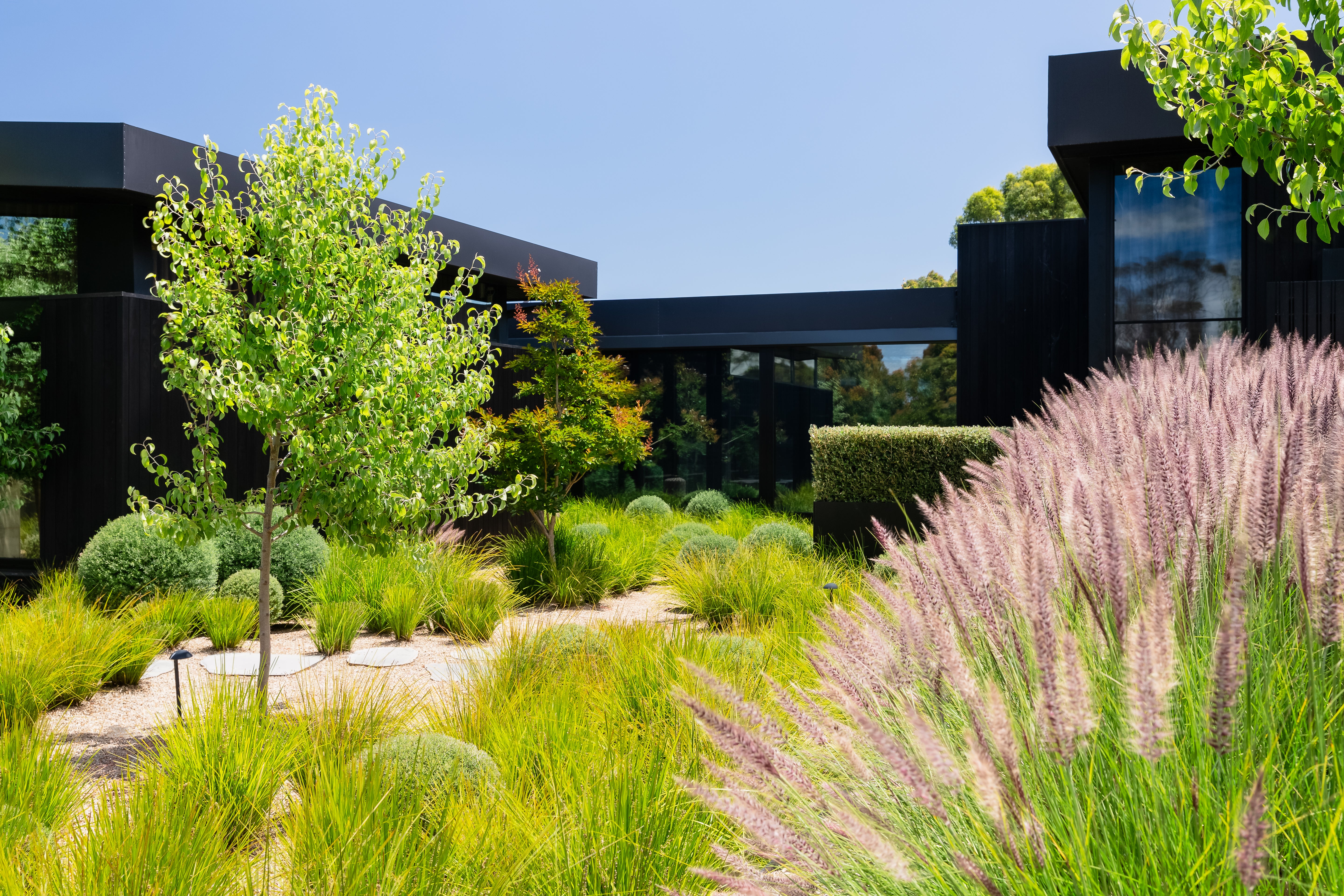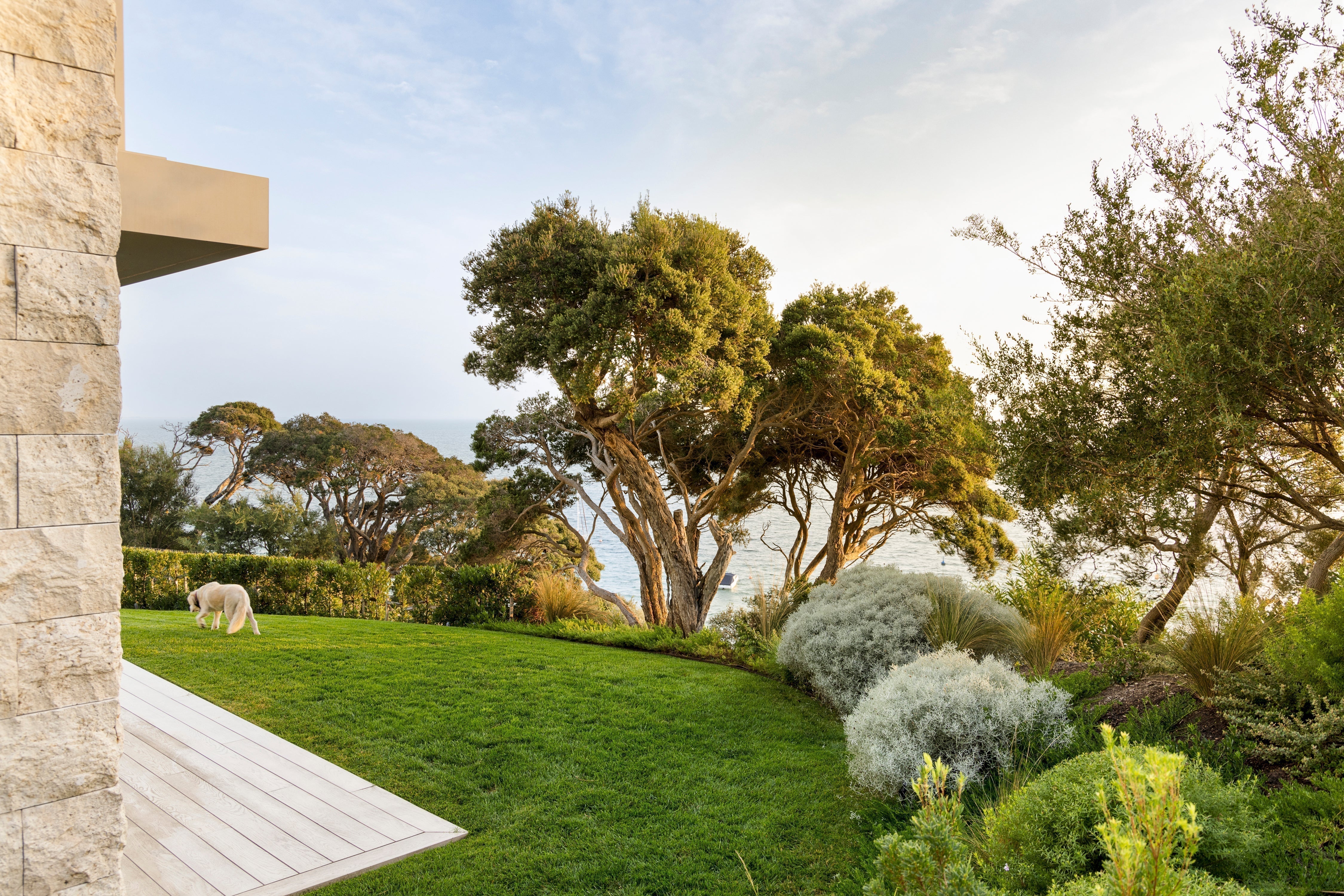
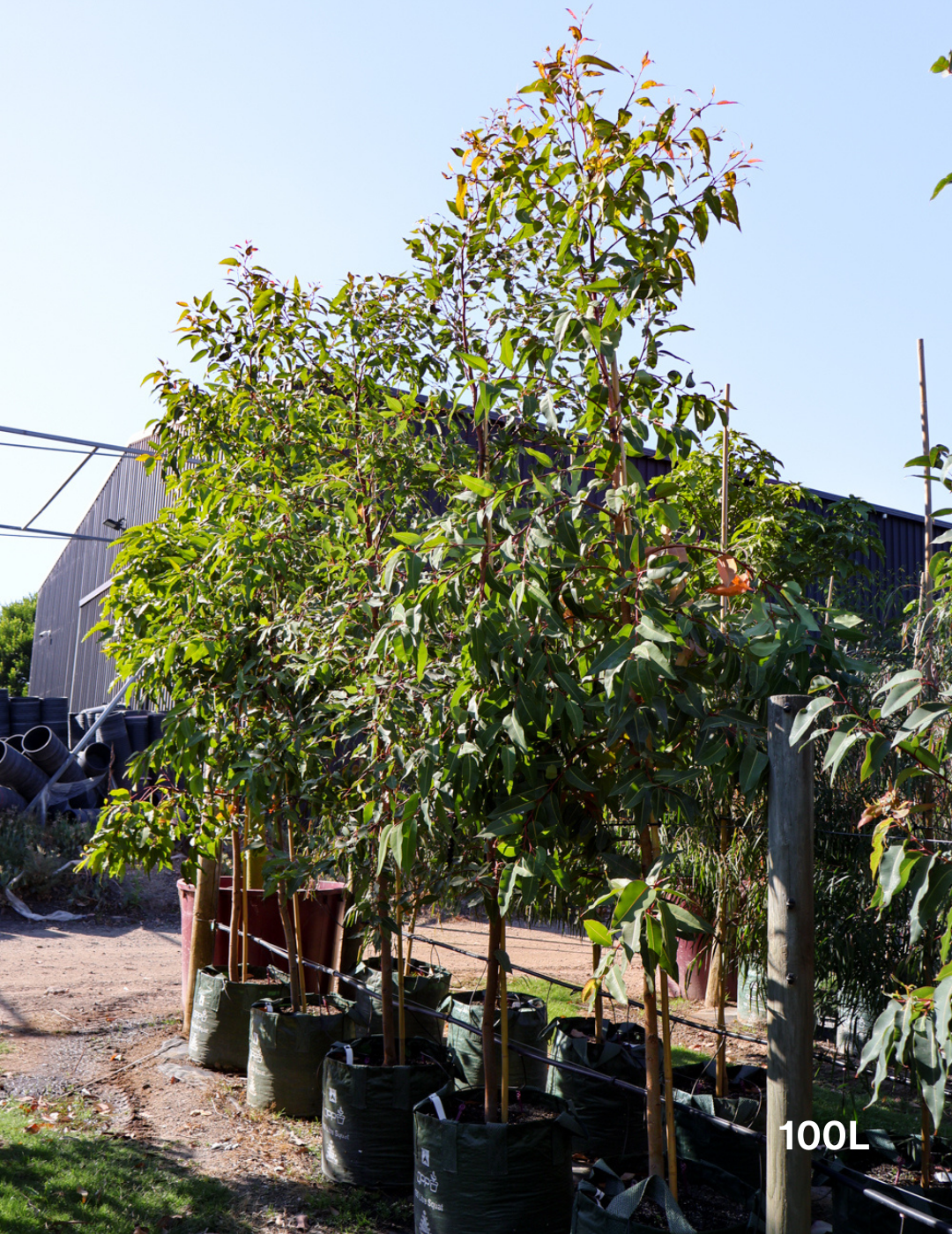
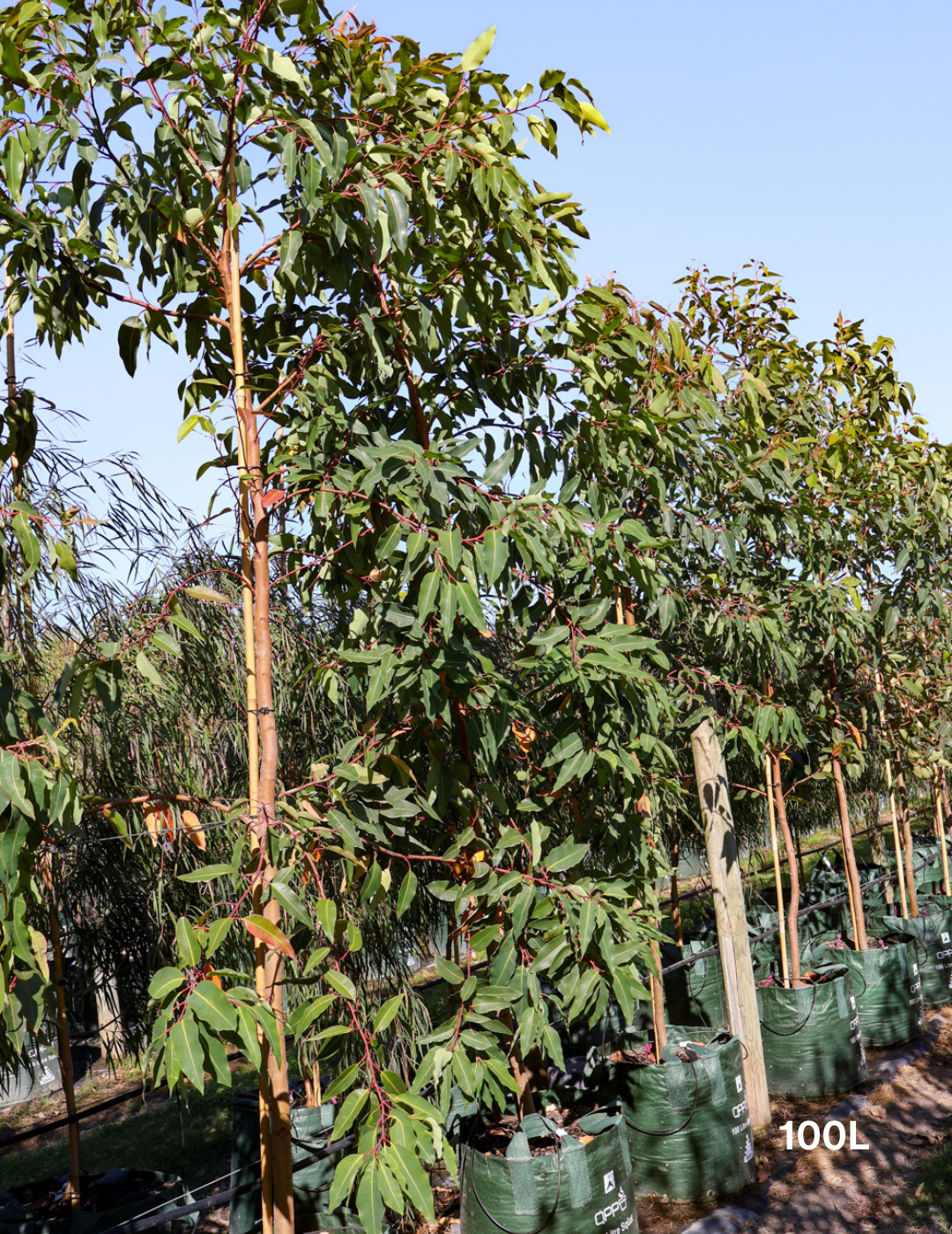
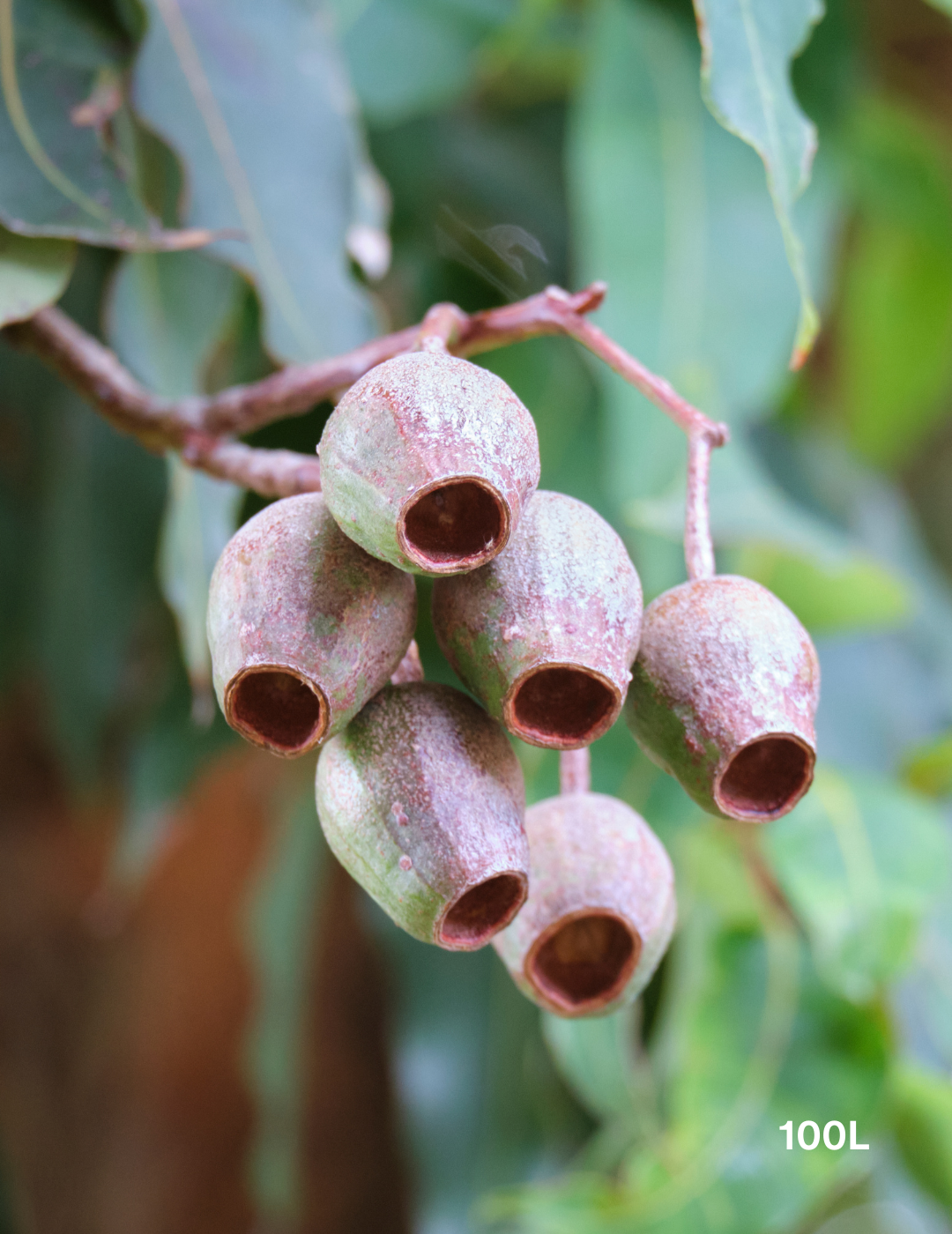
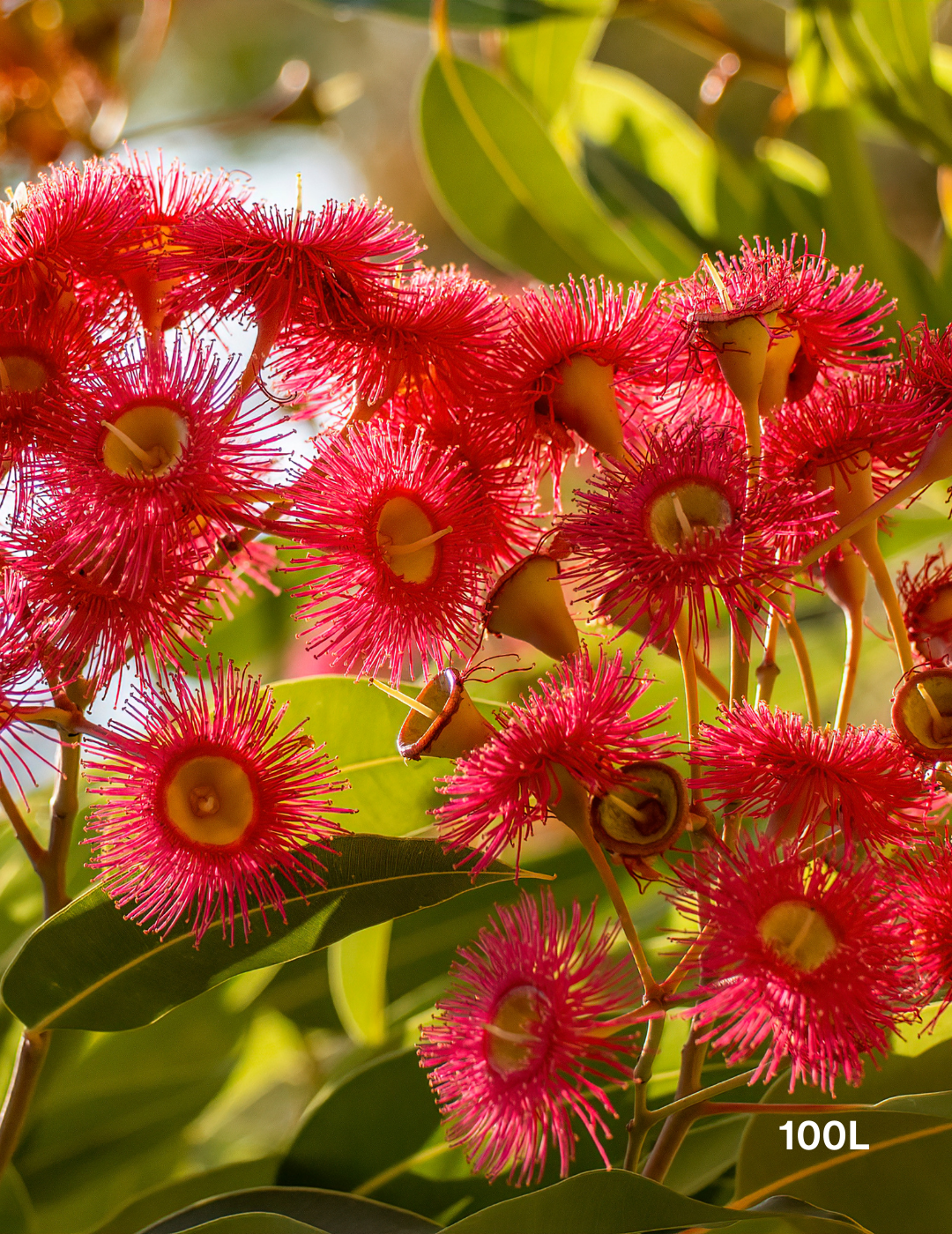
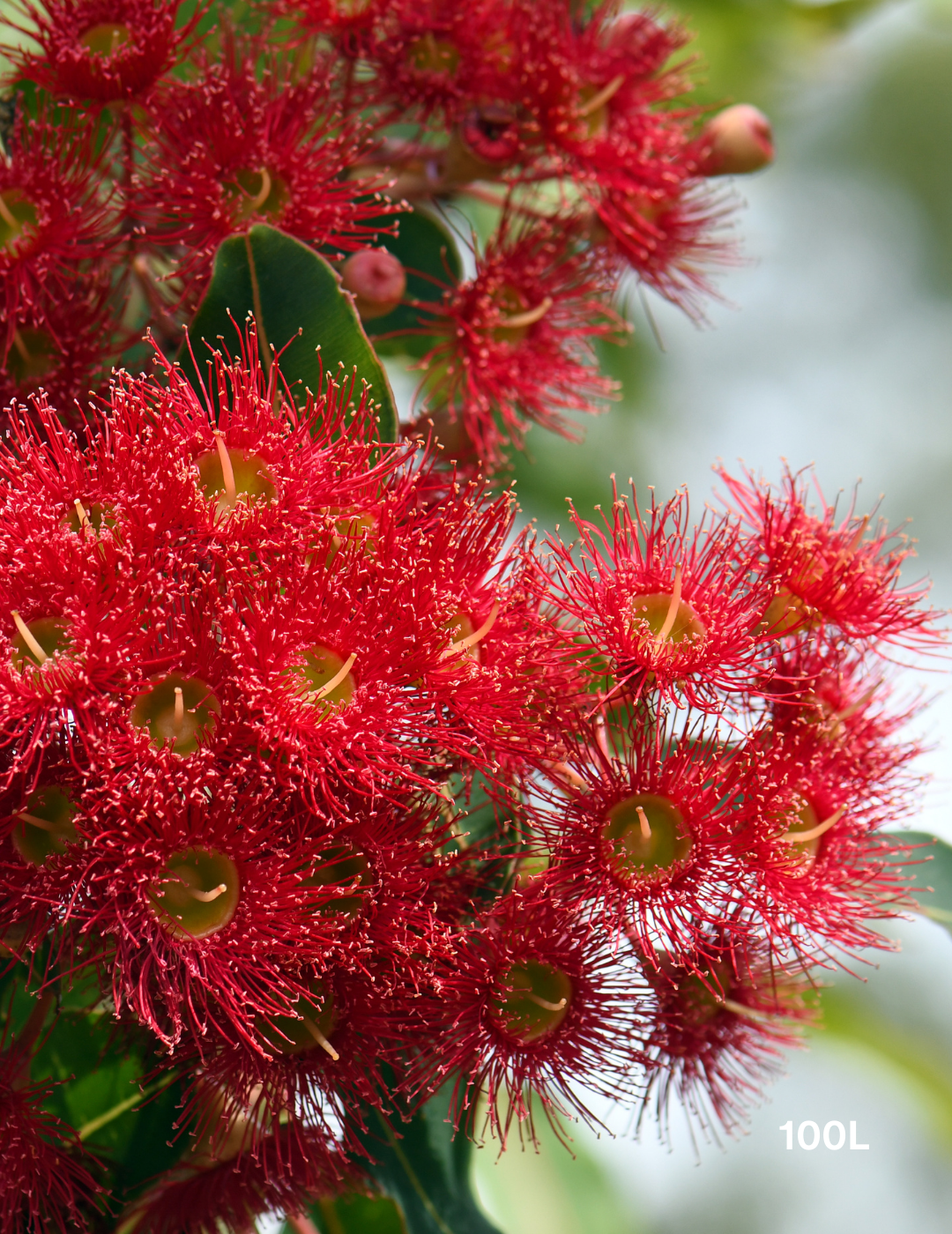
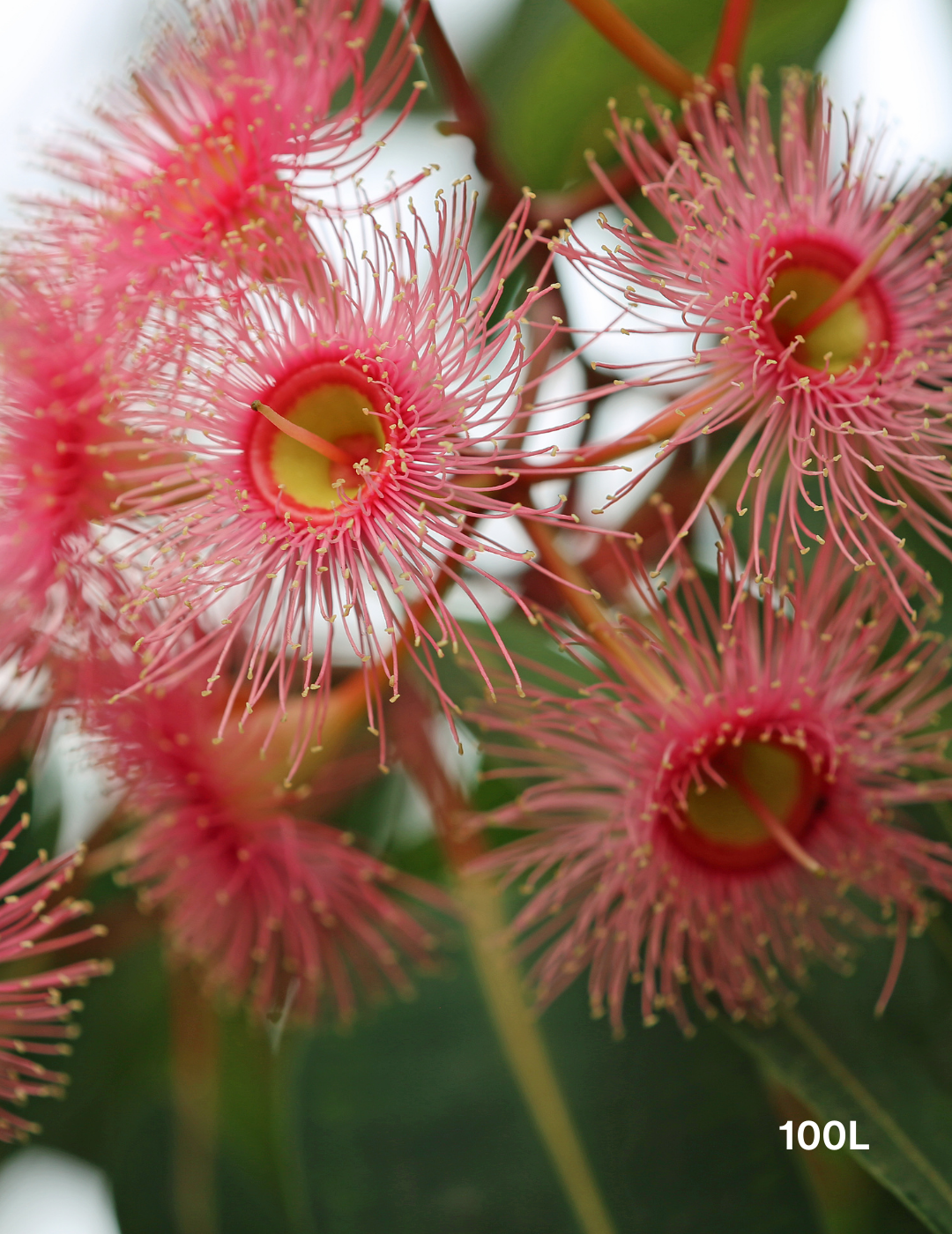
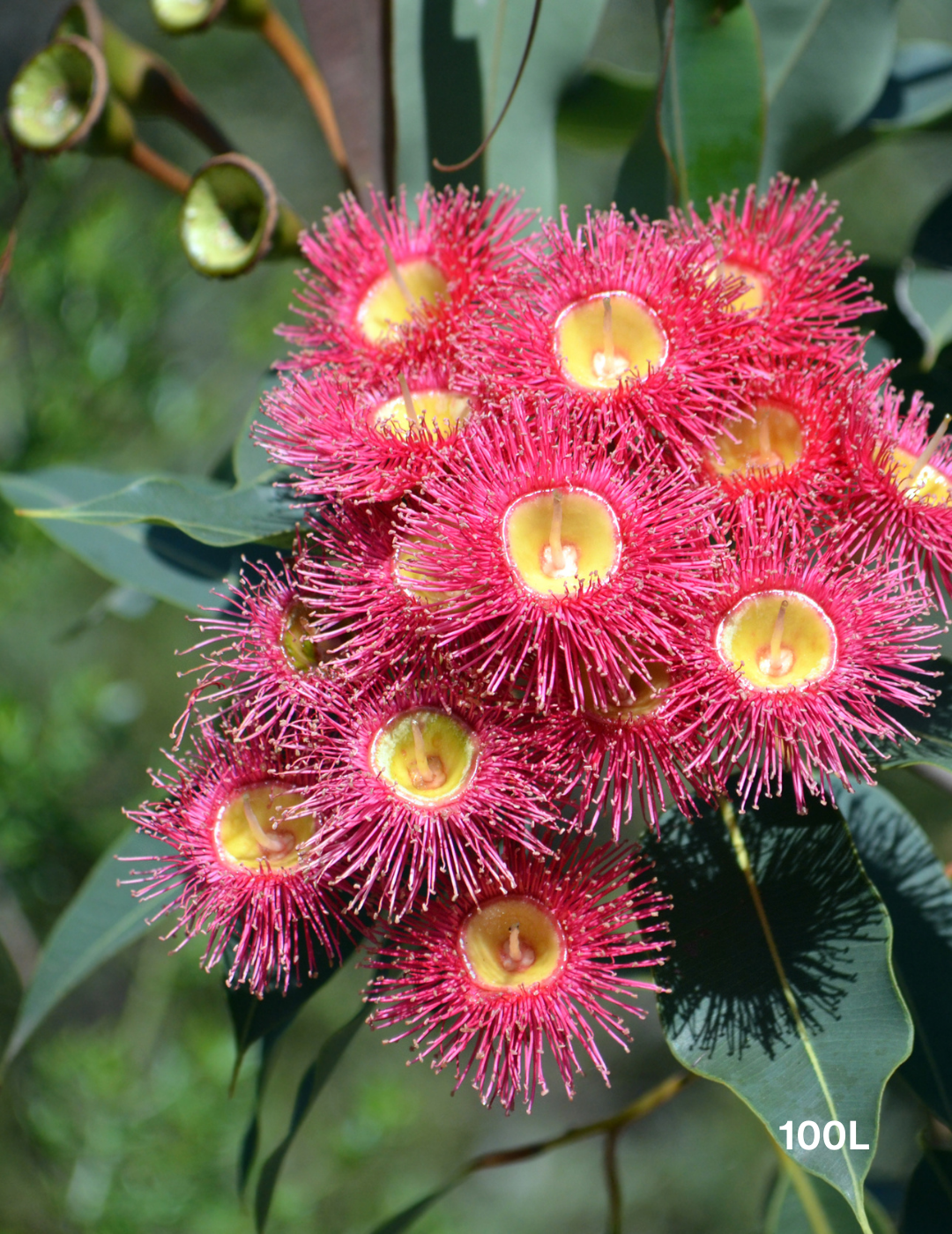
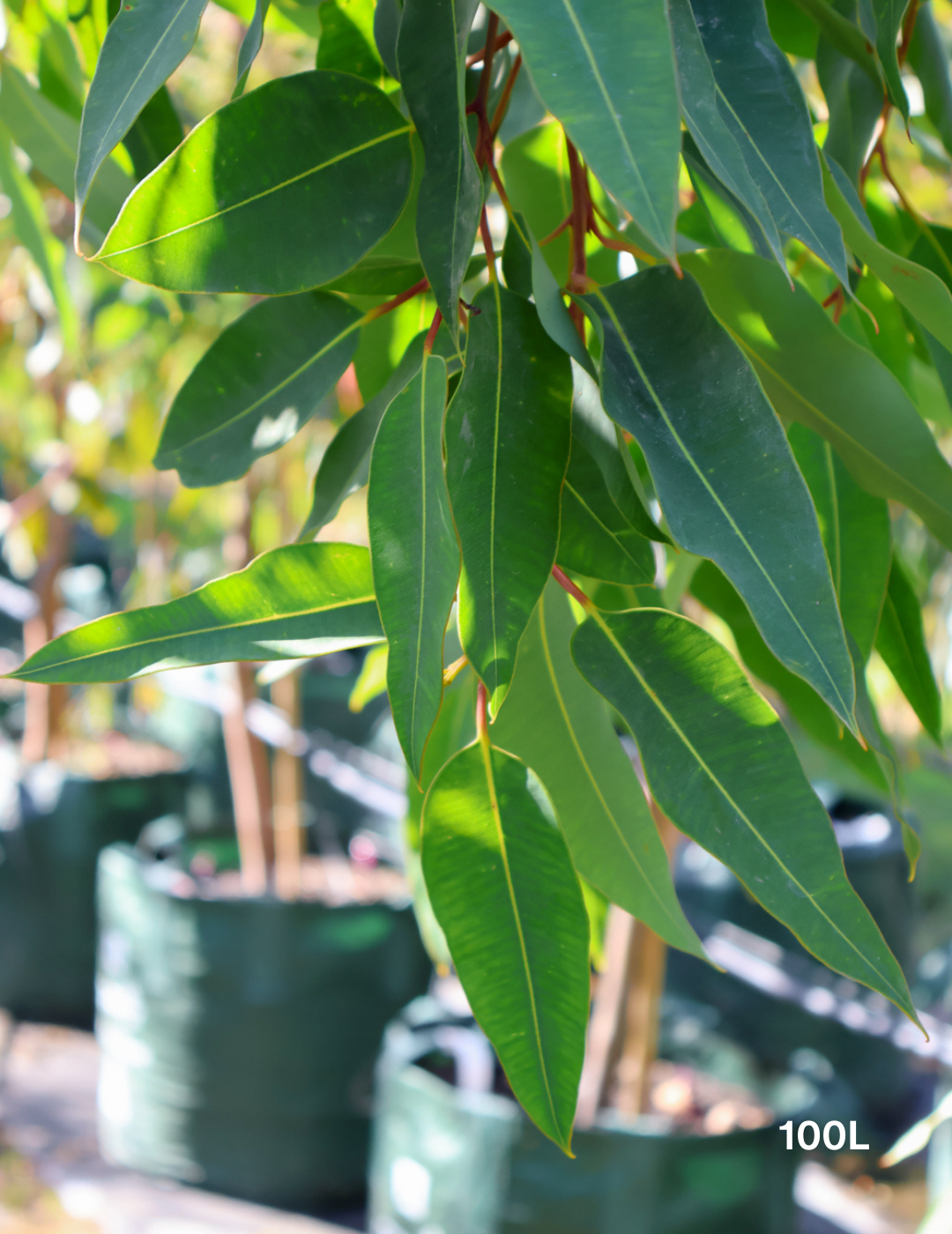
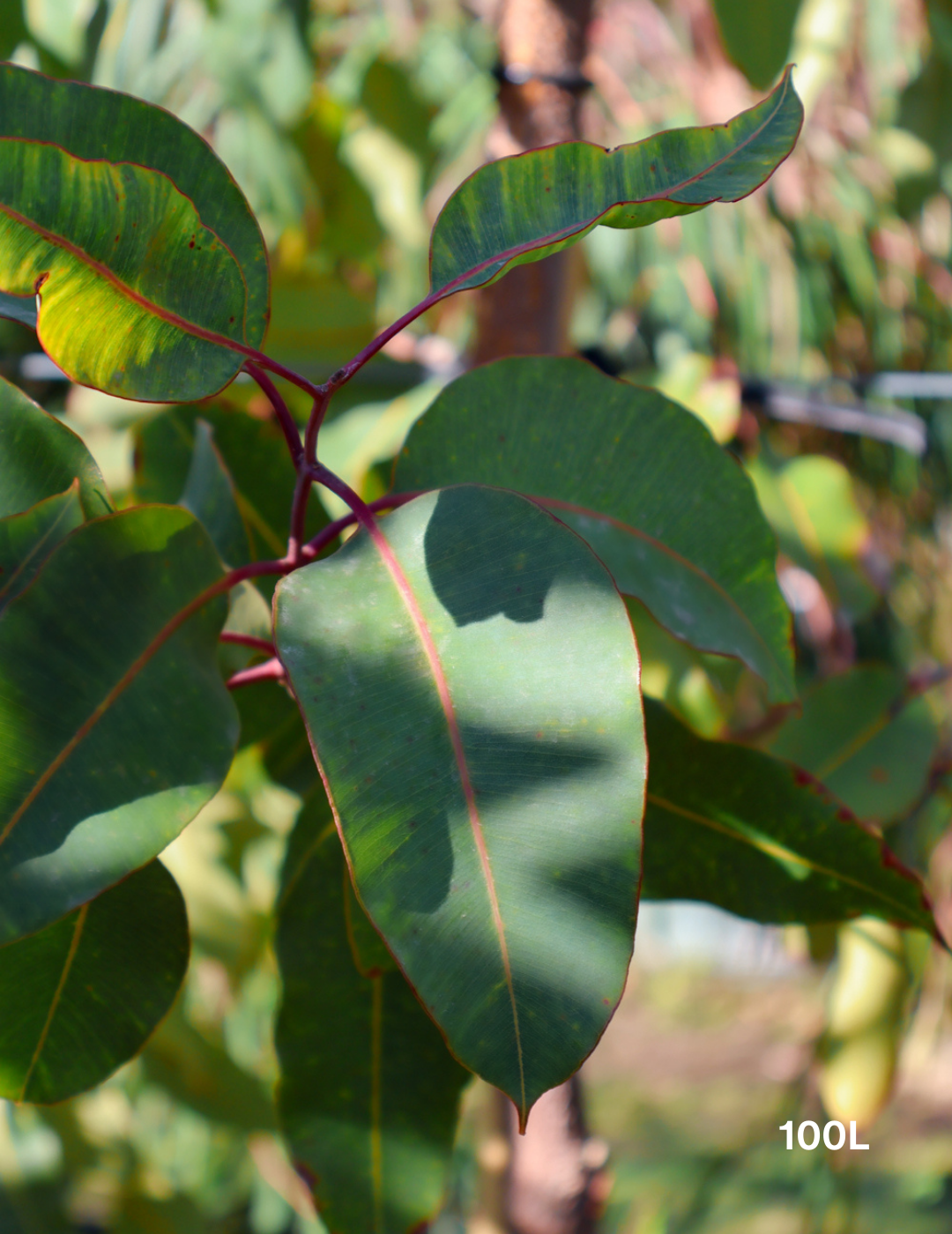
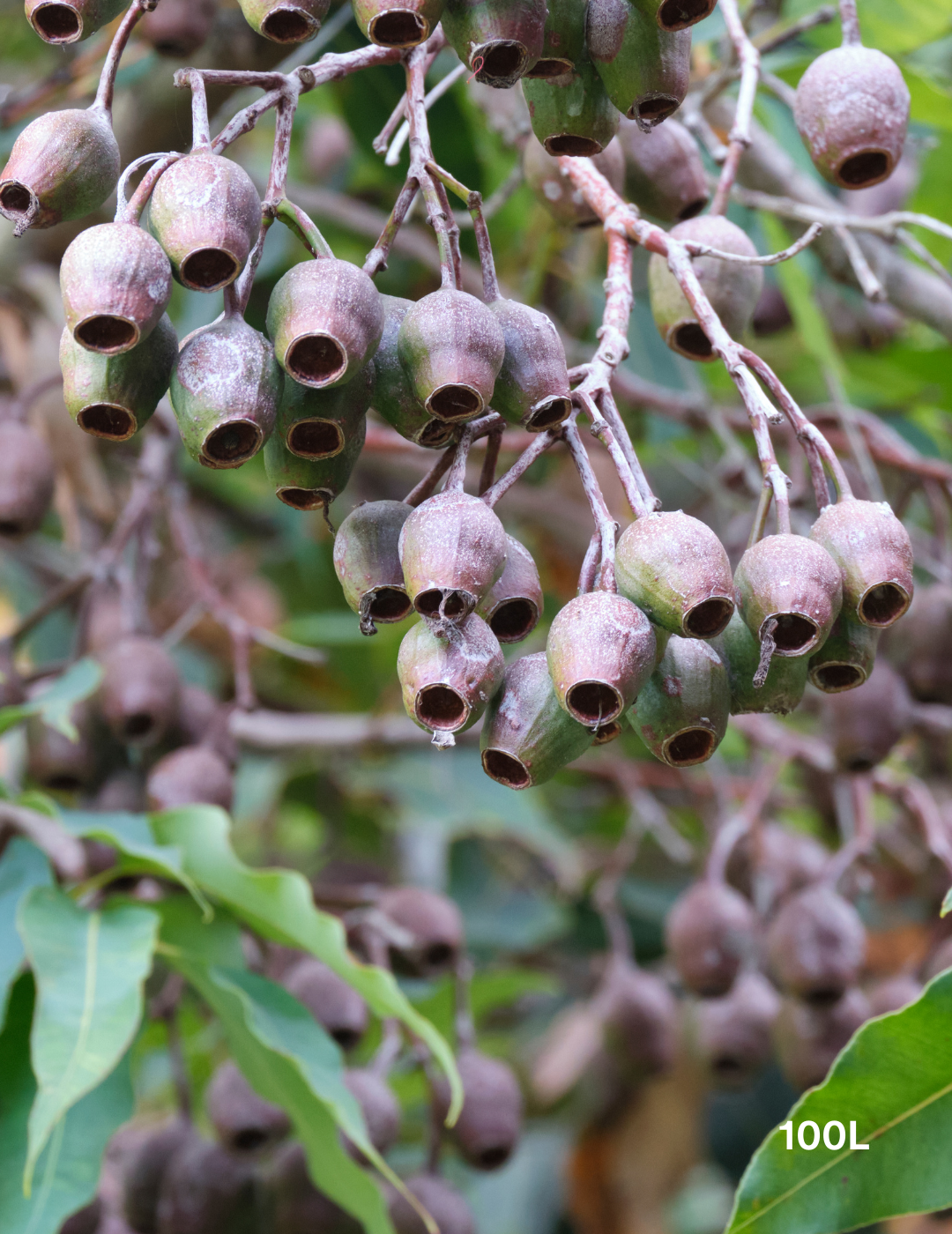
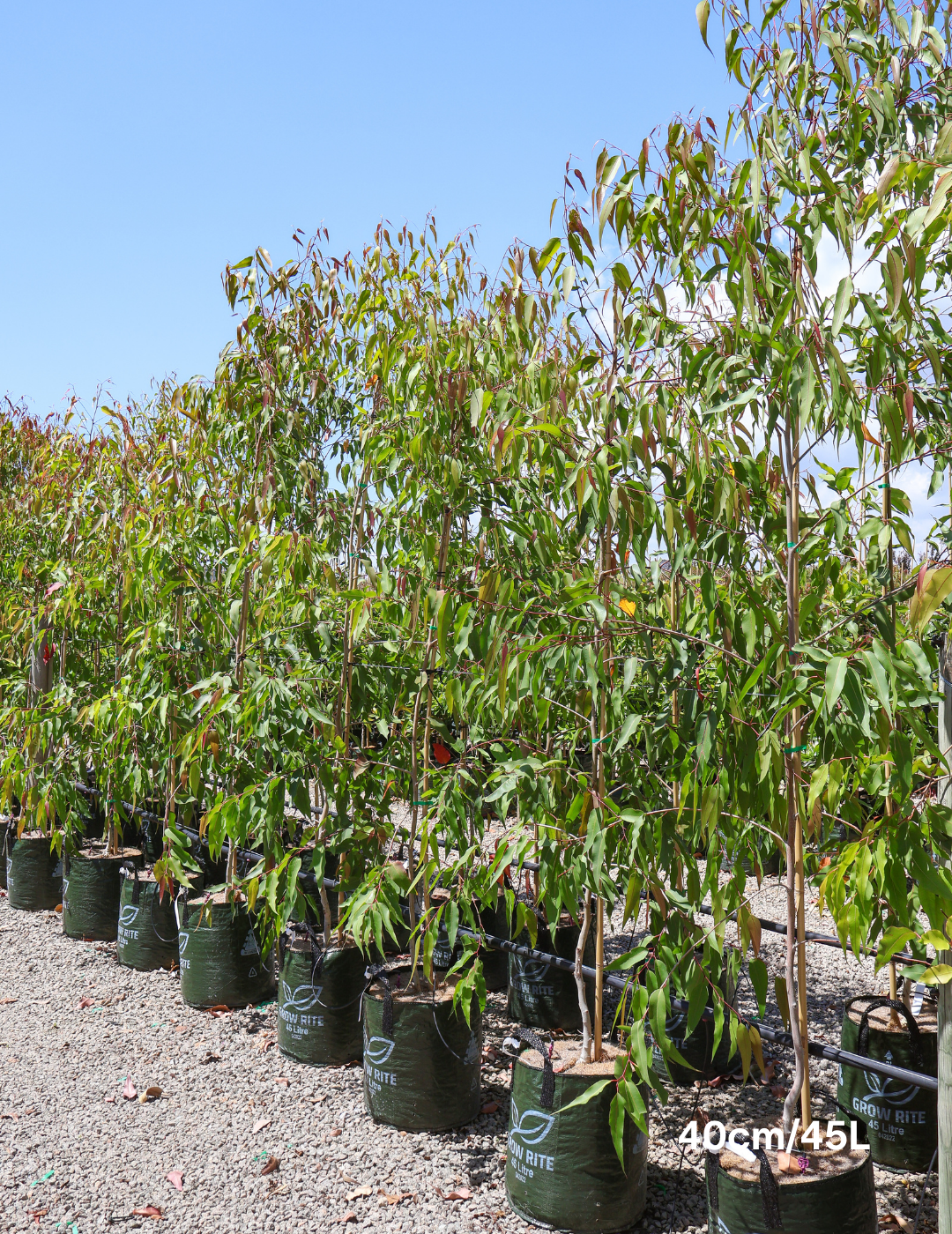
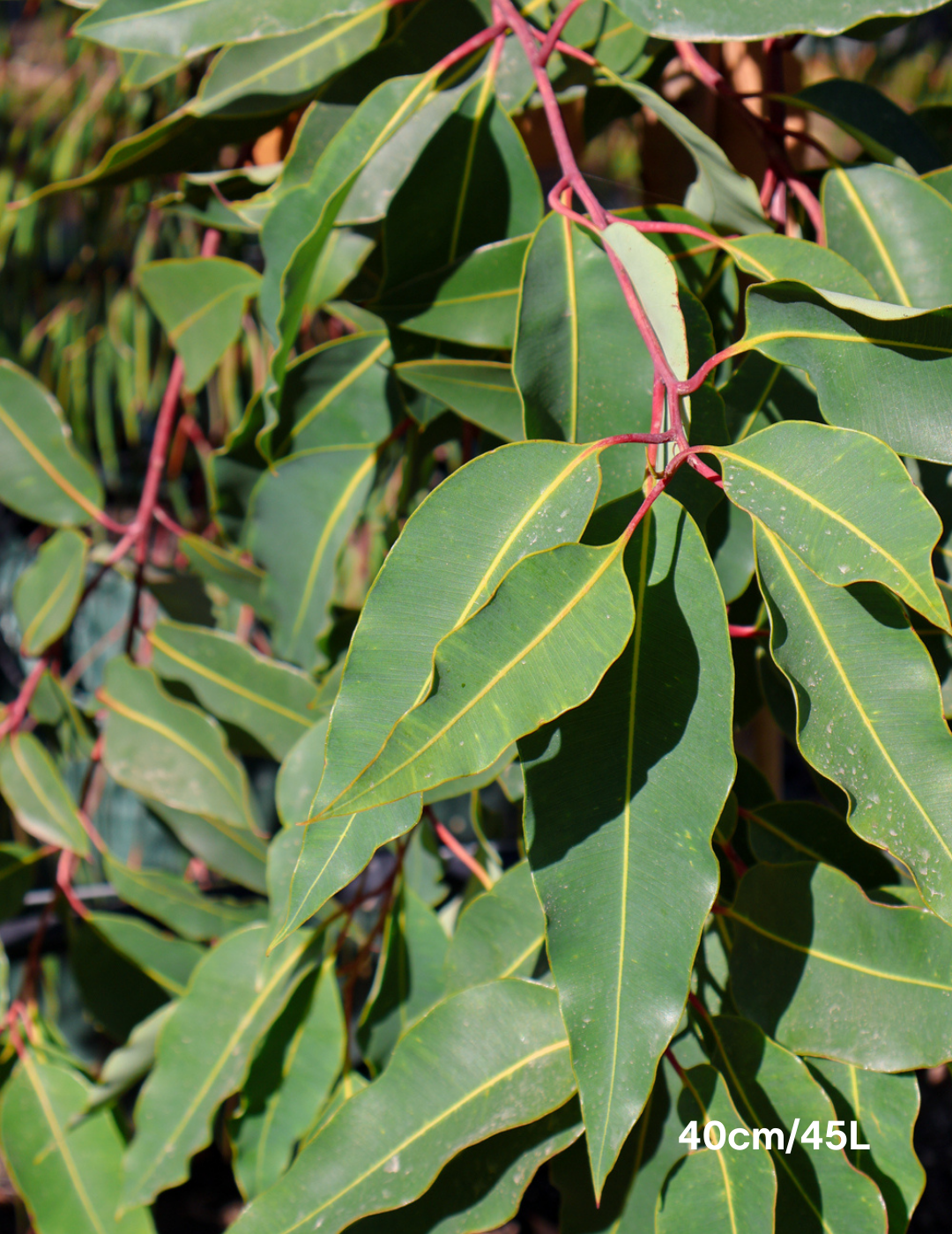
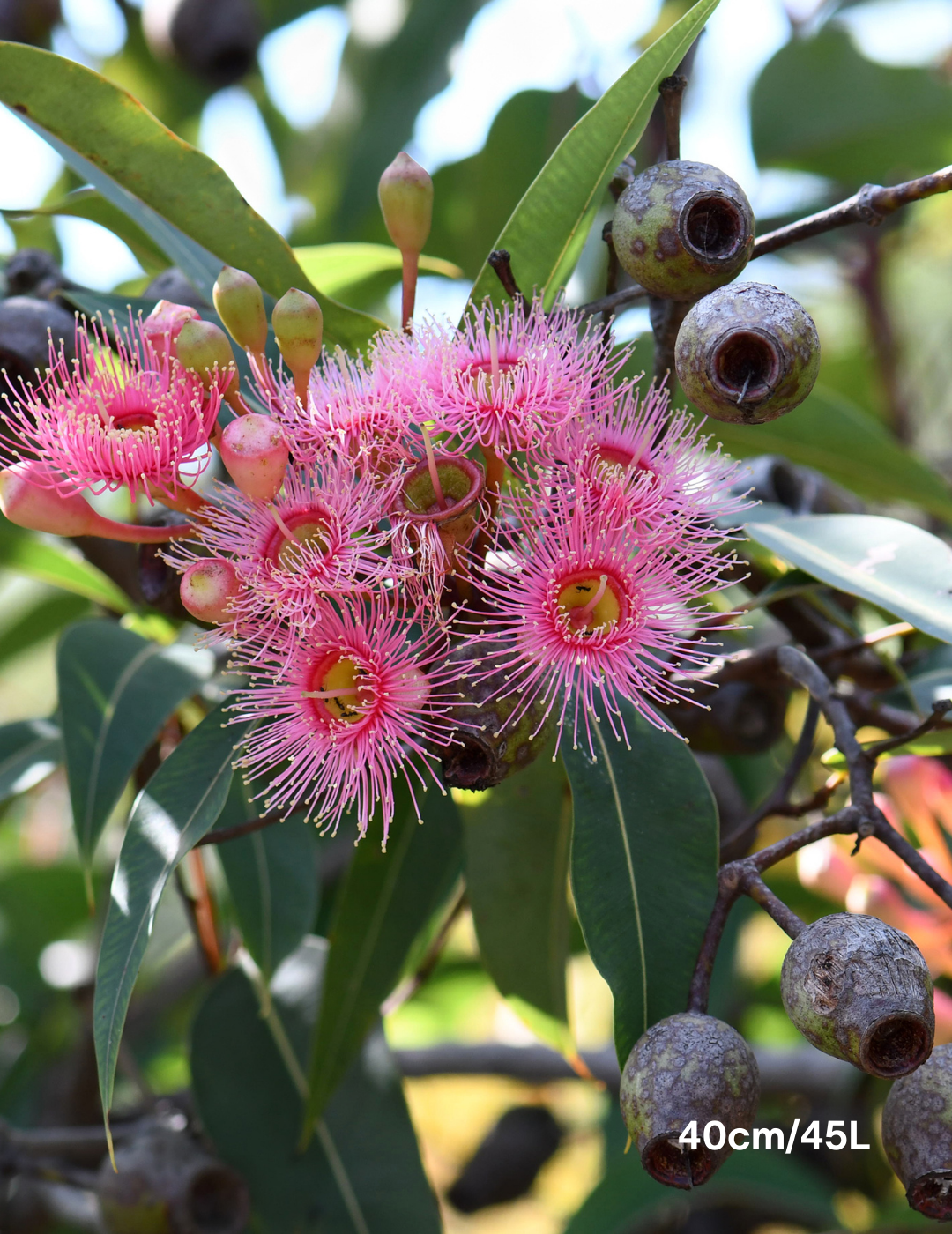
Corymbia Ficifolia
- Regular price
- $555.00
- Sale price
- $555.00
- Regular price
-
Learn About Your New Corymbia Ficifolia
Corymbia ficifolia, commonly known as the Red Flowering Gum, is an iconic Australian native tree famed for its spectacular blooms that range in color from bright red to orange, pink, and even white. This tree not only brings a burst of color to landscapes but also plays a vital role in attracting wildlife, making it an excellent choice for gardens looking to support local biodiversity.
Common Name: Red Flowering Gum
Mature Height: Typically grows to about 10-15 meters, making it a suitable size for a wide range of landscapes.
Mature Width: Can spread 5-10 meters, providing ample shade and visual interest.
Spacing: Plant at least 5 meters apart to allow for canopy spread and air circulation.
Foliage: Boasts glossy, dark green leaves that are ovate-shaped and aromatic when crushed, adding texture and a fresh scent to the garden.
Flowering Period: Blooms profusely from late spring to summer, with clusters of vibrant, nectar-rich flowers that attract birds, bees, and other pollinators.
Form/Habit: Exhibits a dense, rounded canopy, often with a single trunk that makes it an attractive specimen or feature tree.
Uses: Ideal for use as a feature tree in gardens, parks, and streetscapes. Its colorful blooms and dense foliage make it a popular choice for visual impact and shade.
Evergreen/Deciduous: Evergreen, providing year-round color and structure to the landscape.
Tolerates: Shows resilience against drought once established and can tolerate a range of soil types, though it prefers well-drained conditions.
Drought Hardy: Yes, especially once fully established, making it suitable for water-wise gardens.
Sun: Thrives in full sun, requiring direct sunlight for most of the day to produce the best flowering results.
Maintenance: Low; occasional pruning may be needed to shape the tree and remove any dead or damaged branches.
Additional Information
- Soil Preferences: While adaptable to a variety of soil types, it flourishes in well-drained, moderately fertile soils.
- Watering Needs: Regular watering is beneficial during the first few years of growth. Mature trees are quite drought-tolerant.
- Wildlife Attraction: Its flowers are a significant source of nectar for birds, especially honeyeaters, and bees, enhancing the garden's ecosystem.
- Propagation: Propagation is generally from seed, but selected cultivars should be propagated from grafting to ensure flower color and form.
- Pests/Diseases: Relatively pest-resistant but can be susceptible to psyllids, which can be managed with appropriate horticultural practices.
- Landscape Design Tips: Consider planting Corymbia ficifolia in a sunny position where its stunning floral display can be appreciated. It can be used as a standalone feature or grouped with other native plants for a vibrant, water-efficient garden.
Corymbia ficifolia stands out in the landscape for its breathtaking floral display and its ability to bring life to the garden through its attraction of wildlife. This tree represents a beautiful and practical choice for those looking to add a touch of color to their outdoor spaces while supporting local ecosystems.
Need Assistance For Your Next Project? Let Us Help.
Evergreen Trees Direct is Australia's unrivaled supplier of the highest quality advanced tree stock. Our extensive supplier network allows us to provide a one-stop shop for all your landscaping needs, no matter how big or small the project. We pride ourselves on exceptional service, ensuring a seamless experience from selection to delivery. Trust us to bring your landscaping vision to life with the perfect trees for any outdoor space. With our unrivaled selection and commitment to service, Evergreen Trees Direct is the top choice for landscapers, property developers, and garden enthusiasts alike.
-
 A layered, resilient coastal garden designed to withstand harsh salt winds and seasonal extremes. This Mornington Peninsula property features a cur...
A layered, resilient coastal garden designed to withstand harsh salt winds and seasonal extremes. This Mornington Peninsula property features a cur... -

Brighton Project
Presenting our recent project in Brighton, Victoria, landscaped by Jack Merlo Landscape & Design. This modern landscape features a variety of h... -
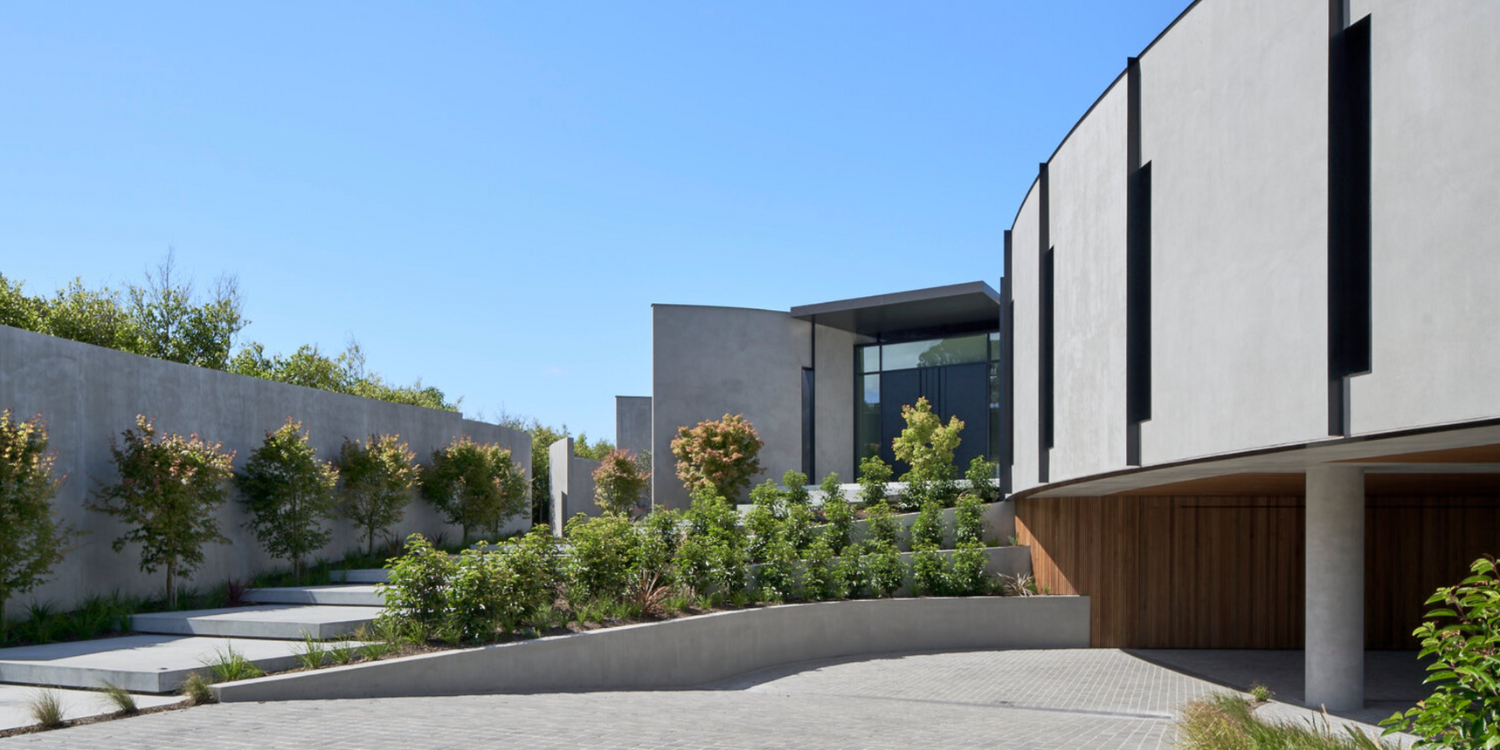
Horizon House, Flinders
Horizon House in Flinders blends nature with bold architectural design, using natural elements to enhance its modern aesthetic.Acer Palmatum (Japan...
